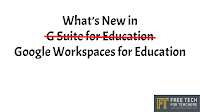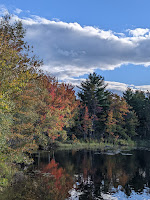A vexing drawback to tribal online college: cultural and social isolation
TOHONO O’ODHAM NATION, Ariz. — By the numbers, Tohono O’odham Community College is booming.
Enrollment in the fall semester was just under 1,200, according to the American Indian Higher Education Consortium, nearly triple what it was in fall 2019.
But the desert campus on an isolated patch of the sprawling Tohono O’odham Native American Reservation was nearly empty on a weekday afternoon. Instructors sat alone in front of computers in classrooms and offices teaching their courses online, which is where nearly all the students are learning these days.
Among the few students physically present was Tim James, a 36-year-old from the Gila River reservation, about two hours from the campus. He’s a resident adviser in one of the school’s few dorms, but even he has taken almost all his courses online this school year. And that’s been tough for him to deal with.
“There’s not that personal touch,” said James, who doesn’t have a computer and takes classes on his phone. “I like that human interaction.”

The empty campus at Tohono O’odham reflects an ongoing dilemma facing not only tribal colleges, but colleges in general, where students are increasingly taking courses at a distance instead of studying together in person.
More than half of all undergraduates now take at least some of their courses online, according to the U.S. Department of Education, up from 43 percent in 2015.
This means that students are spending less time than ever on campus, socializing in residence halls, studying together in the library or working in groups. While some online courses are scheduled so that all students meet at the same time, others are designed to give them flexibility to learn at a convenient time.
The upside is the ability to attract students who work full time or care for children, but online courses also run the risk of increasing isolation at a time when technology and working from home are already creating a lot more of it than was previously the case.
Related: After its college closes, a rural community fights to keep a path to education open
“It is a delicate balance,” said Sharla Berry, associate director of the Center for Evaluation and Educational Effectiveness at California State University, Long Beach. “It involves understanding the unique needs of your population. Instructors really have to be intentional about creating connection points in these online courses.”
This challenge is already being felt acutely at the country’s roughly three dozen tribal colleges. They’re struggling with the conflict between trying to serve as many students as possible in some of the poorest parts of the United States and promoting in-person classes on campuses that often serve as cultural hubs for reservations and work to perpetuate Native American culture.
“A lot of our cultural practices require us to be together,” said Zoe Higheagle Strong, vice provost for Native American relations and programs at Washington State University and a member of the Nez Perce tribe in Idaho, who also teaches educational psychology. And while online courses have helped attract students who otherwise might not have attended college, Higheagle Strong said, a physical gathering place plays an important role for many Indigenous groups.
“It’s very difficult for us to practice our culture over technology.”

Congress defined tribal colleges and universities in the 1960s; these schools enrolled about 15,500 Indigenous students in the fall, according to the college consortium, and more than 2,000 non-Indigenous students. Most, but not all, are associated with specific Native American tribes.
While nearly all the nation’s colleges and universities have debated how online courses will fit into their futures, the stakes are higher for tribal institutions.
Most get money from the federal government for every student they enroll who is a member of a recognized tribe. The tribal college system rewards higher enrollment, which is why many tribal colleges are especially benefiting financially from the upsurge in online students. If they pull back on offering courses online, they risk losing students — many of whom live 50 miles or more from the closest campus — and the funding that comes with them.
Tribal colleges typically charge low tuition and some, including Tohono O’odham, cut tuition altogether during the pandemic.

At Tohono O’odham, college leaders say they’re now torn by how to proceed. On the one hand, they know students won’t drive hours to attend classes. But they also would prefer that more of them come to campus, not only to be together in person, but because the academic results of online students have been comparatively poor.
“The push is to bring students back,” said Laura Sujo-Montes, the academic dean. “Whether they will want to come back, that is the question.”
Perhaps conscious of its remote location — the college has no physical address, although the campus’s white water tank emblazoned with the college name at mile marker 125.5 north is visible for miles — Tohono O’odham leaders have been working to make the campus more attractive both for students and tribal members.
Related: A campaign to prod high school students into college tries a new tack: Making it simple
The school has built a 75-person-capacity outdoor amphitheater for tribal events off a path that skirts a patch of cholla cactus, and it plans to add a gym for athletic and cultural gatherings. Another new building under construction will house programs in the O’odham language. All students and employees are required to take tribal language and history courses, and each building is marked with only its native name. The main campus is called S-cuk Du’ag Maṣcamakuḍ.
“We’re doing things to improve this campus, to make people want to stay,” said President Paul Robertson in a conference room in the Ma:cidag Gewkdag Ki: building.
Many students, however — as has also been the case at nontribal colleges — appear to prefer taking courses online.

At Nebraska Indian Community College, with three campuses on or near the Omaha and Santee reservations, the pandemic more than doubled native enrollment, according to the American Indian Higher Education Consortium, while the number of nonnative students increased nearly twelve-fold. But the college’s board of directors has worried about the lack of in-person classes, said President Michael Oltrogge.
Adding more of those has been a tough sell, Oltrogge said.
“We tried coming back hot and heavy with in-person classes” in the fall of 2021, he said. “By the second week of classes, there was nobody on campus.”
Like Tohono O’odham, the college hopes to attract more people to the campus by building new facilities. But Oltrogge said funding shortfalls have made it difficult to add larger meeting facilities for college and cultural events.

“I need a place to have my graduations,” he said. “I need a place that’s reliable.”
At North Dakota’s Cankdeska Cikana Community College, on the Spirit Lake Reservation, President Cynthia Lindquist, a Spirit Lake Dakota tribal elder, has tried to reconcile her school’s enrollment boom with a campus that is much quieter since the pandemic.
While students are likely to remain largely online from now on, Lindquist hopes the college will find new life and energy as the tribe’s cultural hub. A new building opening in the fall will include a museum and a library with tribal genealogical materials, she said.
Related: MIT, Yale and other elite colleges are finally reaching out to rural students
“The college’s history is tied to the tribe’s history,” Lindquist said. “My tribe will finally have a place. Right now, we don’t have any place to go.”
A few hundred miles west, in Montana, Blackfeet Community College is also trying to balance the increased reliance on online courses with its role as a tribal gathering place. It opened a new elder center last fall that routinely attracts more than 100 community members to its elder luncheons, said Jim Rains, the college’s vice president for academics.
Meanwhile, San Carlos Apache College in Arizona has faced the unique challenge of coming of age during the pandemic era. It opened in 2017 with a few dozen students in a handful of unused buildings next to the tribal offices, but enrollment swelled to nearly 400 with the move to online courses, said Lisa Eutsey, the provost.

While college leaders have a site in mind for a new campus and hope to deepen the school’s cultural importance to the community, Eutsey said they’re also “still trying to figure out exactly what we’re going to be.” The initial thinking was that San Carlos Apache would provide mostly in-person instruction, she said, but the strategy has changed.
“Covid has really allowed us to expand our operations to people who weren’t part of our initial plans,” Eutsey said of the online students who live far from campus. Now that the college has changed, she added, “it’s almost like there’s no turning back.”
Leaders at several tribal colleges said they have been pressured by their accreditor, the Higher Learning Commission, to bring more students back to campus because few of the schools’ online programs have been approved. Some said that the commission’s demand is unrealistic and unfair to rural colleges and students who likely will simply stop attending college without online options.
The Higher Learning Commission declined to answer questions about its discussions with the colleges.
Other leaders said a return to in-person learning makes sense, partly because of the cultural importance of being around others from their community.
“I think everybody here wants to get back to that type of service delivery,” said Monte Randall, president of the College of the Muscogee Nation in Oklahoma. “I’m so tired of Zoom meetings. We want to get back in person and see each other.”
Related: When a Hawaii college sets up shop in Las Vegas: Universities chase students wherever they are
Some tribal colleges worry that they are about to lose droves of students whether they’re online or not. During the pandemic, they offered some combination of free tuition, phones, computers, internet and housing, but say they can’t afford to continue that strategy and intend to begin charging tuition again later this year; they expect a big enrollment drop when they do so.
Those fears may be well-founded. On the campus of Tohono O’odham — which has committed to continuing to let students attend without charge — every student asked said he or she had only started attending because tuition was free.
“We want to get back in person and see each other.”
Monte Randall, president, College of the Muscogee Nation
For some, however, the cultural aspects are among the biggest draws for a return to in-person classes.
Sky Johnson grew up in the tiny O’odham village of Comobabi, in the foothills a few miles from Tohono O’odham. When the college announced in 2020 that tuition would be free, she jumped at the opportunity to start working toward her goal of studying art or animation in Japan.
Johnson said she wants to create manga or anime about her culture, as well as to become an herbalist and help her village. A self-described introvert, Johnson said she’s nevertheless in favor of in-person courses because she learns better in a classroom.
“I like to be out,” she said, “but I don’t like to talk to people.”
This story about tribal colleges was produced by The Hechinger Report, a nonprofit, independent news organization focused on inequality and innovation in education. Sign up for our higher education newsletter. Listen to our higher education podcast.



